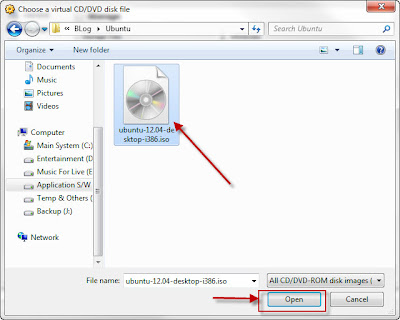After successfully installed the Ubuntu to your machine, there are some commands that you have to run to install the updates and plug-in in order to get your system running more smoothly.
Open a terminal windows by following step or use shortcut key (Ctrl + Alt + T) :
fig 0.1
fig 0.2
1. Check and install for Updates
- Run the command below to install the latest updates :
sudo apt-get update && sudo apt-get upgrade
- Step 1 Completed
2. Install Ubuntu Restricted Extras
- Ubuntu by default cannot recognize the media format
- This plug-in/package is to make your system recognize and play popular file formats like mp3, avi, Flash videos etc....
- run the Command below :
sudo apt-get install ubuntu-restricted-extras
- Step 2 Completed.
3. Check and Update the Hardware Driver- Normally while you install the Ubuntu system, it will auto detect and install all the hardware drive such graphic card, network card, sound card and etc... somehow, there are still some certain cases the driver was not correctly installed to your system
- To ensure that all your driver is updated, you may follow the step below to find out :
- Find the "System Settings" on your left hand side, then click "Additional Drivers" ,if the driver not installed correctly, it will list down from there.
- What you need to do is, find the driver and click "install" will do.
- Step 3 Completed
4. Enable Dual Layer DVD/Encrypted Support- Even you have installed the retricted extras but still, there are not support or failed to play the dual layer DVD ( I also dunno why ......, dun ask me)
- You need to run the commands below to install the medibuntu and enable the function :
sudo wget --output-document=/etc/apt/sources.list.d/medibuntu.list http://www.medibuntu.org/sources.list.d/$(lsb_release -cs).list && sudo apt-get --quiet update && sudo apt-get --yes --quiet --allow-unauthenticated install medibuntu-keyring && sudo apt-get --quiet update
sudo apt-get install libdvdcss2
- Step 4 Completed.
5. Install Ubuntu Tweak- Ubuntu tweak is an application that allow you to configure your Ubuntu with easier.
- Run the command below to download and install the Ubuntu tweak.
sudo add-apt-repository ppa:tualatrix/ppa
sudo apt-get update
sudo apt-get install ubuntu-tweak
- Step 5 Completed.
6. Install Compiz Config System Manager (CCSM)- CCSM is a tools that get play around the desktop effects of Ubuntu system
- Run the command below to download and install the CCSM
sudo apt-get install compizconfig-settings-manager
- This plug-in/package is to make your system recognize and play popular file formats like mp3, avi, Flash videos etc....
- run the Command below :
sudo apt-get install ubuntu-restricted-extras
- Step 2 Completed.
3. Check and Update the Hardware Driver- Normally while you install the Ubuntu system, it will auto detect and install all the hardware drive such graphic card, network card, sound card and etc... somehow, there are still some certain cases the driver was not correctly installed to your system
- To ensure that all your driver is updated, you may follow the step below to find out :
fig 3.1
- Find the "System Settings" on your left hand side, then click "Additional Drivers" ,if the driver not installed correctly, it will list down from there.
- What you need to do is, find the driver and click "install" will do.
- Step 3 Completed
- You need to run the commands below to install the medibuntu and enable the function :
sudo wget --output-document=/etc/apt/sources.list.d/medibuntu.list http://www.medibuntu.org/sources.list.d/$(lsb_release -cs).list && sudo apt-get --quiet update && sudo apt-get --yes --quiet --allow-unauthenticated install medibuntu-keyring && sudo apt-get --quiet update
sudo apt-get install libdvdcss2
- Step 4 Completed.
5. Install Ubuntu Tweak- Ubuntu tweak is an application that allow you to configure your Ubuntu with easier.
- Run the command below to download and install the Ubuntu tweak.
sudo add-apt-repository ppa:tualatrix/ppa
sudo apt-get update
sudo apt-get install ubuntu-tweak
fig 5.1
- Step 5 Completed.
6. Install Compiz Config System Manager (CCSM)- CCSM is a tools that get play around the desktop effects of Ubuntu system
- Run the command below to download and install the CCSM
sudo apt-get install compizconfig-settings-manager






































